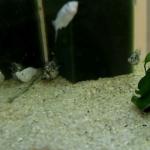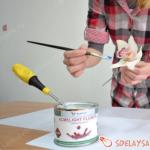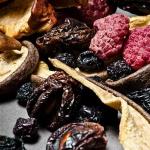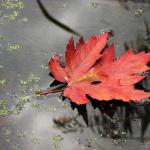How to properly dry medicinal herbs
Midsummer is the time to collect medicinal plants. The article tells about this. And the collected raw materials must be dried in order to preserve for the winter. And this business also has its own rules and important nuances - how effective the collected natural medicines will be depends on their observance.
What happens to the plant when it dries
The healing effect of plants is due to the content of certain chemical compounds in them, and our goal is to preserve them as much as possible. But in a living plant, various biochemical processes constantly occur, as a result of which some of the active substances are destroyed (it is no coincidence that the collection of medicinal raw materials is recommended to be carried out at a strictly defined time - when the concentration of useful elements is maximum).
Drying stops these processes: an aqueous medium is required for the activity of cellular enzymes. By removing moisture, we stop the intracellular processes that lead to the transformation or decomposition of active substances. And accordingly, the faster we dry, the less we lose.
Well, in addition, various microorganisms and mold fungi readily multiply in a humid environment - high-quality drying of medicinal raw materials protects it from such damage.
General rules for drying medicinal plants
Most medicinal herbs should be dried in the shade: under the influence of sunlight, the destruction of the beneficial compounds they contain is accelerated and the natural color of the raw material changes. For some types of raw materials, drying in the sun is strictly prohibited; These include:- any essential oil plants (, and others);
- glycoside-containing plants (eg, adonis, bearberry and others);
- flowers and inflorescences (, and others);
- large leaves (and others), nettle herb.

It is imperative to provide good ventilation: if you dry in a room, it must be ventilated; if you are using an oven, do not forget to leave the door ajar; if you have the opportunity to dry the raw materials in the oven, maintain the draft by leaving the damper half open.
Where to dry medicinal herbs
If you regularly harvest medicinal raw materials, it is advisable to take care of equipping a convenient place for drying it.The ideal option is a ventilated attic under an iron roof. In summer, optimal conditions are created here: high temperatures and good air circulation. If there is no attic, you can allocate a place for herbs on the street under a canopy or in a country house. In cold and damp summers, when the natural heat for drying is not enough, you can use a dryer, oven or oven.

The grass can be dried by tying it in small bunches and hanging it on ropes or nails under the ceiling. But this method is not suitable for all plants - for example, the herb of centaury small, when dried in bunches, turns yellow and moldy.
You can dry the raw material by spreading it out in a thin layer on paper or fabric - this is the most versatile method. But it must be borne in mind that in the season of mass harvesting of medicinal herbs you will need a lot of space.
For drying flowers and inflorescences, fruits, seeds, it is good to use frames with stretched gauze or a fine mesh; A tray, baking sheet, or a wide box with low sides will also come in handy.
Temperature regime
The drying temperature depends on the type of medicinal raw material. So, plants containing essential oils should be dried at temperatures no higher than +35 degrees (at higher temperatures, the essential oil evaporates). Raw materials with a high content of vitamin C (for example, rose hips) are dried quickly, at high temperatures (+ 70 ... + 90 degrees). Plants, in which the main active substances are glycosides, are also dried quickly (to stop the activity of enzymes that destroy these compounds), but at lower temperatures - +50 ... + 60 degrees.Features of drying some types of medicinal raw materials
Berries and juicy fruits should be dried before drying. This is best done in the sun; if the weather is not happy, the raw material is placed on a tray or baking sheet covered with several layers of paper, which is changed as it is soaked in juice. The berries prepared in this way are dried in an oven or dryer at a moderate temperature.
Flowers and inflorescences dry quickly with good ventilation. It is undesirable to stir them up during drying, so the raw materials are laid out in a thin layer. The large leaves are laid out one at a time and turned over after the top dries.
When using a dryer or oven, raw materials are often overdried. So that it does not crumble during packaging, turning into dust, it should be kept indoors for some time, allowing it to absorb a little moisture from the air, and only then laid out in bags or containers.
How to tell if drying is complete
Well-dried raw materials, as a rule, retain their natural color (yellowed or blackened leaves, faded petals are evidence that the plant has not been properly dried, and most likely its healing properties have been lost).Berries and juicy fruits are considered dried if you do not get dirty by squeezing them in your hand, and the raw materials remain crumbly, do not stick together into a lump. After drying, the roots should break with a crunch, and the leaves and flowers should be ground into powder.
Where and how do you dry medicinal plants for your home medicine cabinet?




